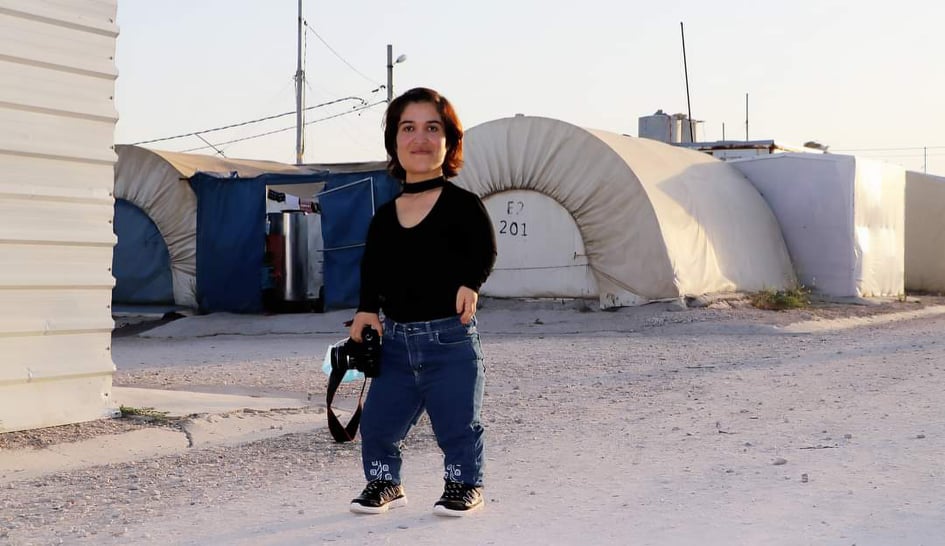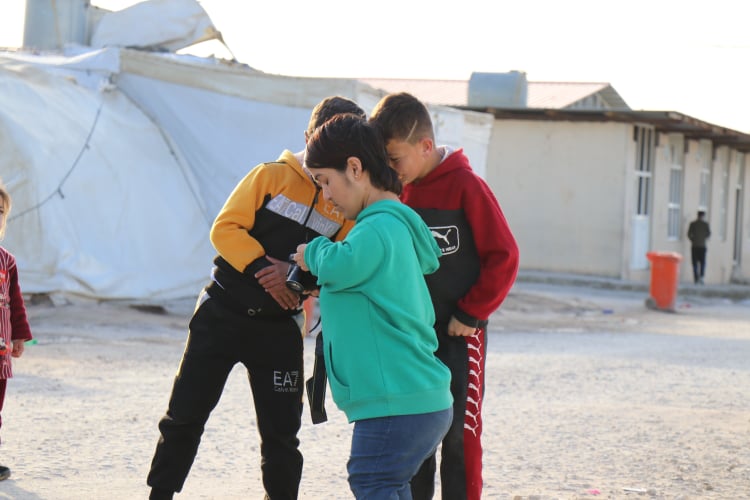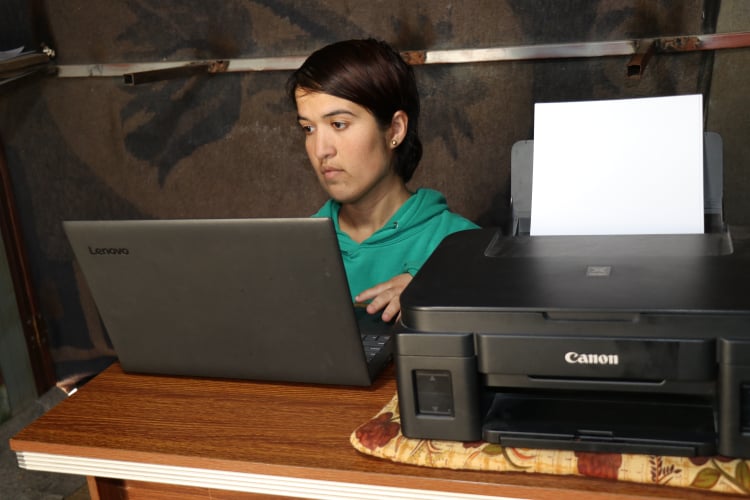
For long days, camp of the displaced was a hell for Nissan Mirza. She had no friends and all were making fun of the “little person.” She quits school and stays at a corner in their tent broken with very little income.
Nissan Mirza is a displaced with special needs in Kabatw IDP camp in northern province of Duhok. She flew from Shingal, home for ezidi religious minority, to escape atrocities of ISIS militiamen in August 2014. She was only 14 when she fled Shingal with her family to start a new stage of her life in IDP camp.
Life in camp was twice difficult for Nissan: People were only displaced yet fingers were crossing at her as the little person, making her dreams impossible to come true.

She was one year behind due to displacement and lack of school. She decides to compensate it next year and vows to go on but being the little girl was embarrassing for her. “I could not bear all these critical comments and quit school,” she says.
She was in class seven in camp. No one was ready to be her friend and had an inferior view of her. “In Shingal all pupils were relatives and neighbours of us so I had no problem. No one was criticizing me but in the camp I was a stranger for them.”
“In Shingal all pupils were relatives and neighbours of us so I had no problem. No one was criticizing me but in the camp I was a stranger for them.”
Nissan takes a decision to change her life. After two years in camp, she vows to bring her dreams true. She joins school again. Now she is in class 9. “I got good grades which changed the mind of people about the little person.”
Nissan was fond of photography. It was a good way to document life in camps. She tells her father that she likes to have a camera. “We had no money but he borrowed some and bought me one for USD250. I was taking photos of the hardships the displaced face specially women and children. I take photos of the events I find interesting.”

She has taken about 15,000 photos in a short period.
“I was so happy that this dream came true.” Every day, she reviews some of it with the people and kids of the camp. She thinks of compensating her father for his initiative as they had no any source of income.
“I was so happy that this dream came true.”
She sets up a small stationery store with her father’s help. “I have some profits now. I bought a printer. I take photos for brides for 30-100USD.”

Now she has a firm foundation in camp and all love her. They call her the camerawoman. “I always keep thinking of doing my best for them.”
She is happy that she can give her family a hand. “My family spent money for me to realize my dreams and now I am helping them and this was another dream of mine.”
Nowadays, Nissan is trustworthy and a story of success for all the camp. She worked hard to grow up and support her family. “You have to pay attention to your skills so that you can get attention,” particularly those with special needs.
This article can be viewed in Arabic, Kurdish or Turkish via KirkukNow
